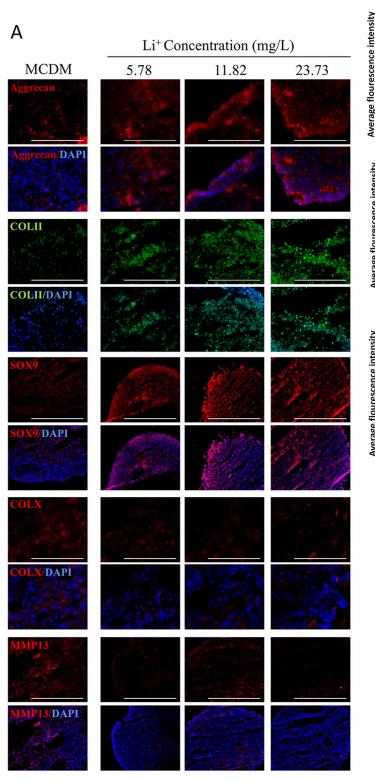SOX9 Antibody - #AF6330
Product Info
*The optimal dilutions should be determined by the end user.
*Tips:
WB: For western blot detection of denatured protein samples. IHC: For immunohistochemical detection of paraffin sections (IHC-p) or frozen sections (IHC-f) of tissue samples. IF/ICC: For immunofluorescence detection of cell samples. ELISA(peptide): For ELISA detection of antigenic peptide.
Cite Format: Affinity Biosciences Cat# AF6330, RRID:AB_2835186.
Fold/Unfold
campomelic dysplasia autosomal sex reversal; CMD 1; CMD1; CMPD 1; CMPD1; SOX 9; Sox9; SOX9_HUMAN; SRA 1; SRA1; SRXX2; SRXY10; SRY (sex determining region Y) box 9 (campomelic dysplasia autosomal; SRY (sex determining region Y) box 9; SRY (sex determining region Y)-box 9; SRY (sex-determining region Y)-box 9 protein; SRY related HMG box gene 9; Transcription factor SOX 9; Transcription factor SOX-9; transcription factor SOX9;
Immunogens
- P48436 SOX9_HUMAN:
- Protein BLAST With
- NCBI/
- ExPASy/
- Uniprot
MNLLDPFMKMTDEQEKGLSGAPSPTMSEDSAGSPCPSGSGSDTENTRPQENTFPKGEPDLKKESEEDKFPVCIREAVSQVLKGYDWTLVPMPVRVNGSSKNKPHVKRPMNAFMVWAQAARRKLADQYPHLHNAELSKTLGKLWRLLNESEKRPFVEEAERLRVQHKKDHPDYKYQPRRRKSVKNGQAEAEEATEQTHISPNAIFKALQADSPHSSSGMSEVHSPGEHSGQSQGPPTPPTTPKTDVQPGKADLKREGRPLPEGGRQPPIDFRDVDIGELSSDVISNIETFDVNEFDQYLPPNGHPGVPATHGQVTYTGSYGISSTAATPASAGHVWMSKQQAPPPPPQQPPQAPPAPQAPPQPQAAPPQQPAAPPQQPQAHTLTTLSSEPGQSQRTHIKTEQLSPSHYSEQQQHSPQQIAYSPFNLPHYSPSYPPITRSQYDYTDHQNSSSYYSHAAGQGTGLYSTFTYMNPAQRPMYTPIADTSGVPSIPQTHSPQHWEQPVYTQLTRP
Predictions
Score>80(red) has high confidence and is suggested to be used for WB detection. *The prediction model is mainly based on the alignment of immunogen sequences, the results are for reference only, not as the basis of quality assurance.
High(score>80) Medium(80>score>50) Low(score<50) No confidence
PTMs - P48436 As Substrate
| Site | PTM Type | Enzyme | Source |
|---|---|---|---|
| T11 | Phosphorylation | Uniprot | |
| S30 | Phosphorylation | Uniprot | |
| T43 | Phosphorylation | Uniprot | |
| T46 | Phosphorylation | Uniprot | |
| K61 | Acetylation | Uniprot | |
| S64 | Phosphorylation | P17612 (PRKACA) | Uniprot |
| K68 | Ubiquitination | Uniprot | |
| S78 | Phosphorylation | Uniprot | |
| K82 | Ubiquitination | Uniprot | |
| K122 | Ubiquitination | Uniprot | |
| K137 | Ubiquitination | Uniprot | |
| K141 | Acetylation | Uniprot | |
| K141 | Ubiquitination | Uniprot | |
| Y172 | Phosphorylation | Uniprot | |
| K173 | Ubiquitination | Uniprot | |
| S181 | Phosphorylation | P17612 (PRKACA) , Q13237 (PRKG2) , Q13464 (ROCK1) | Uniprot |
| T196 | Phosphorylation | Uniprot | |
| S199 | Phosphorylation | Uniprot | |
| S211 | Phosphorylation | Uniprot | |
| S214 | Phosphorylation | Uniprot | |
| S223 | Phosphorylation | Uniprot | |
| T236 | Phosphorylation | Uniprot | |
| T239 | Phosphorylation | Uniprot | |
| T240 | Phosphorylation | Uniprot | |
| K249 | Ubiquitination | Uniprot | |
| K253 | Acetylation | Uniprot | |
| K398 | Acetylation | Uniprot | |
| S414 | Phosphorylation | Uniprot | |
| Y442 | Phosphorylation | Uniprot |
Research Backgrounds
Transcriptional regulator that plays a role in chondrocytes differentiation and skeletal development. Binds to the COL2A1 promoter and activates COL2A1 expression, as part of a complex with ZNF219 (By similarity).
Ubiquitinated. Ubiquitination leads to proteasomal degradation and is negatively regulated by DDRGK1.
Nucleus.
Interacts (via C-terminus) with ZNF219. Interacts with DDRGK1.
Research Fields
· Environmental Information Processing > Signal transduction > cAMP signaling pathway. (View pathway)
References
Application: IF/ICC Species: Human Sample: iPSCs
Application: WB Species: mouse Sample:
Application: WB Species: Mice Sample: macrophages
Application: WB Species: Rat Sample:
Restrictive clause
Affinity Biosciences tests all products strictly. Citations are provided as a resource for additional applications that have not been validated by Affinity Biosciences. Please choose the appropriate format for each application and consult Materials and Methods sections for additional details about the use of any product in these publications.
For Research Use Only.
Not for use in diagnostic or therapeutic procedures. Not for resale. Not for distribution without written consent. Affinity Biosciences will not be held responsible for patent infringement or other violations that may occur with the use of our products. Affinity Biosciences, Affinity Biosciences Logo and all other trademarks are the property of Affinity Biosciences LTD.




